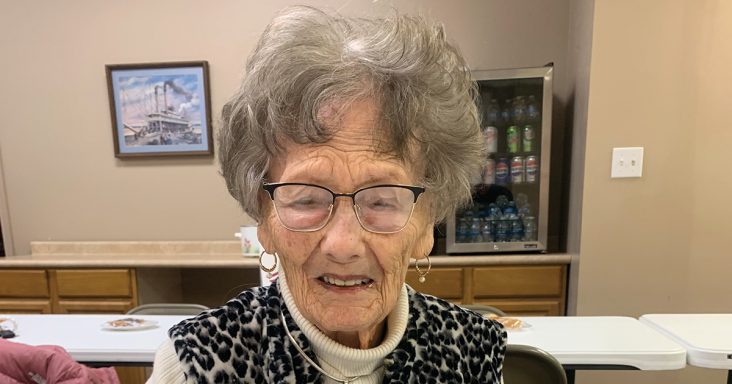Ponder recalls her memories of Pearl Harbor attack
by December 31, 2024 10:30 am 723 views

In the days leading up to the Dec. 7, 1941, attack at Pearl Harbor, military code breakers were at work trying to decipher Japanese codes. Japan was waging war in Asia and the Pacific while Germany, Italy, Great Britain and the Soviet Union battled each other in Europe and Africa.
Several codes were deciphered, and it was clear to U.S. officials, including President Franklin Roosevelt, that the Japanese were on the verge of breaking diplomatic relations and war between the countries was imminent, according to the U.S. Naval Institute.
But if a surprise attack was being planned, where would it be?
Code breakers finally deciphered a message on the morning of the attack that Pearl Harbor was the target. Communications were so slow during that period that an alert was received four hours after the attack started.
One resident in Walnut Ridge watched the attack happen in real time. Catherine Ponder, 103, was 20 years old when bombers descended on the Pacific fleet stationed in the harbor. Her recollections have dimmed, but she still vividly remembers watching the ships being destroyed, she told Talk Business & Politics.
“My memories have faded some. … I do remember watching the bombs being dropped,” she said. “We had no idea who was attacking us. All we had back then was the radio and they had no idea. I watched it in absolute shock. I couldn’t believe what was happening.”
Ponder watched the attack with her infant son, Will. The family had moved to the island months before. Her husband, Miles was a sailor on the USS Pensacola, cruiser commission in 1929. The Pensacola was headed to Manila in the Philippines when the attack came.
The young wife said she knew he wasn’t in the harbor, but she had no clue if his ship had been attacked in the open seas. Miles Ponder, who died at the age of 98 in 2015, previously said he had no clue if his wife and newborn son had been hurt or killed during the attack.
Tensions between the two Pacific powers had been growing in the months leading up to Pearl Harbor, said Harold Johnson, the founder of the Wings of Honor Museum. The U.S. annexed Hawaii in 1898 and a decade later established a naval base in the harbor. Work was done to improve the harbor during the 1930s and a repair facility was built there, he said.
By 1940, Japan was at war with China and several other Asian countries. As their armies advanced, the Japanese needed oil, steel and other raw materials to fuel their war machine. The U.S. enacted trade rules that blocked or limited Japan’s access to many of those materials. In another provocative move, the U.S. sent its Pacific fleet to Pearl Harbor to act as a deterrent. Tensions continued to grow, and on Nov. 26, 1941, the Japanese fleet left on a secret mission headed to Hawaii.
Many of the fleet’s battleships including the USS Arizona and USS Oklahoma were in the harbor during the attack, but its aircraft carriers were out to sea, according to the National Museum of the Navy.
There was a potential early warning before the initial bombardment. Hours before, a Japanese submarine was fired upon not far from the harbor. At 7:55 a.m. local time, nearly 200 planes appeared in the skies above battleship row. Torpedoes and bombers rained from the skies. The USS Arizona and USS Oklahoma were destroyed during the first wave. Johnson said there were men trapped inside the USS Oklahoma for 16 days who couldn’t be rescued, and they perished.
Many other battleships, destroyers and other vessels were damaged. Scores of military planes were destroyed when an airfield was raided. An estimated 3,400 military personnel died that day making it one of the deadliest days in U.S. history.
Miles Ponder had no way of knowing if anything happened to his wife and son. After the attack at Pearl Harbor, the Japanese invaded the Philippines, and his ship was redirected to Australia.
Eventually, it would return to Pearl Harbor and then set out to fight in the Pacific theater.
Months after the attack, Catherine Ponder and her son returned to the U.S., she said. Along the way they encountered several Japanese submarines, but civilian ships were not attacked in accordance with international law at the time, she said.
The war ended several years later and the Ponders returned to their hometown of Walnut Ridge in Lawrence County. To this day, Ponder still plays the piano at the Old Walnut Ridge Baptist Church, a skill she has had since she was 12 years old growing up in the midst of the Great Depression.
How often does she think about that dreadful day?
“Not a lot but some. My memories are not the same, but it’s still there. It is a bit surreal to think about sometimes,” she said.
